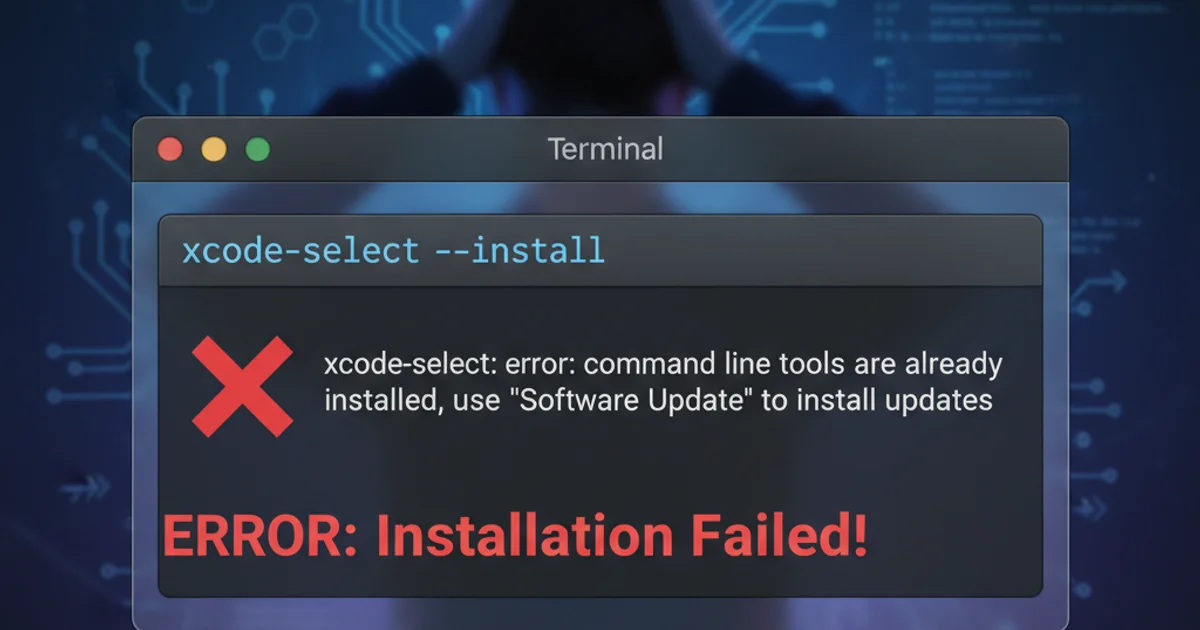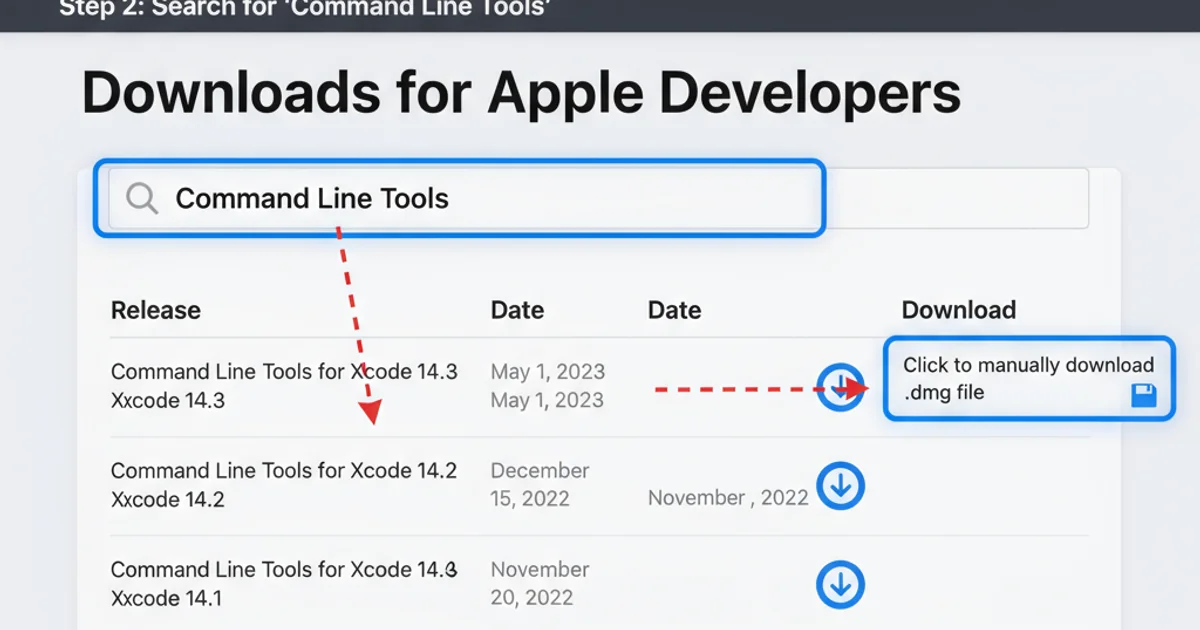`xcode-select --install` failing
xcode-select --install failing with practical examples, diagrams, and best practices. Covers xcode, terminal, imagemagick development techniques with visual explanations.Categories:
Troubleshooting xcode-select --install Failures on macOS

Learn to diagnose and resolve common issues preventing the successful installation of Xcode Command Line Tools, essential for development on macOS.
The xcode-select --install command is a fundamental step for many developers on macOS. It installs the Xcode Command Line Tools, which include essential utilities like Git, Make, GCC, and other compilers and build tools. Without these tools, tasks such as compiling source code, installing packages via Homebrew or MacPorts, or even running certain scripts will fail. This article will guide you through common reasons why this command might fail and provide solutions to get your development environment up and running.
Understanding the xcode-select Command
Before diving into troubleshooting, it's helpful to understand what xcode-select does. This utility manages the active developer directory for Xcode and its associated command-line tools. When you run xcode-select --install, it attempts to download and install a standalone package containing the command-line tools, separate from the full Xcode IDE application. This package is much smaller and quicker to install if you don't need the full Xcode application.
xcode-select --install
The command to install Xcode Command Line Tools.
Common Failure Scenarios and Solutions
Failures with xcode-select --install can stem from various issues, ranging from network problems to corrupted installations or system configuration. Here are the most frequent causes and their respective solutions.
Scenario 1: Command Line Tools Already Installed
One of the most common 'failures' is when the tools are already present, but the system might not be aware of their location, or you might be trying to reinstall them unnecessarily. The command will often report an error like 'command line tools are already installed, use "Software Update" to install updates'.
xcode-select -p
# Expected output if installed: /Applications/Xcode.app/Contents/Developer or /Library/Developer/CommandLineTools
Check the current path of the Xcode Command Line Tools.
1. Verify Installation Status
Run xcode-select -p. If it returns a path, the tools are likely installed. If it returns an error or an empty path, they might not be properly configured.
2. Reset xcode-select Path
If the path is incorrect or you suspect corruption, you can reset it using sudo xcode-select --reset. This command attempts to find the correct path or prompt for installation if none is found.
3. Check for Updates
Open 'System Settings' (or 'System Preferences' on older macOS versions) -> 'General' -> 'Software Update' to see if there are any pending macOS or Xcode Command Line Tools updates.
Scenario 2: Network or Server Issues
The installation process requires downloading files from Apple's servers. Network connectivity issues, firewalls, or temporary server outages can prevent a successful download.
1. Check Network Connectivity
Ensure your internet connection is stable. Try accessing other websites or services to confirm network functionality.
2. Disable VPN/Proxy Temporarily
If you're using a VPN or proxy, try disabling it temporarily and then re-run the xcode-select --install command. These services can sometimes interfere with Apple's download servers.
3. Try Again Later
If you suspect Apple's servers are experiencing issues, waiting a few hours and trying again can often resolve the problem.
Scenario 3: Corrupted or Incomplete Downloads
Sometimes, the download might complete but be corrupted, or the installation process might fail midway, leaving behind incomplete files that prevent subsequent attempts.
1. Remove Existing Command Line Tools
If you suspect a corrupted installation, you can manually remove the existing tools. Use sudo rm -rf /Library/Developer/CommandLineTools. Be cautious with rm -rf.
2. Reattempt Installation
After removal, try xcode-select --install again. This forces a fresh download and installation.
3. Download Manually from Apple Developer Portal
As a last resort, you can manually download the Command Line Tools package from the Apple Developer website. Go to developer.apple.com/download/more/, log in with your Apple ID, and search for 'Command Line Tools for Xcode' for your specific macOS version. Download the .dmg file and install it manually.

Manually downloading Command Line Tools from the Apple Developer Portal.
Scenario 4: macOS Version Incompatibility
Each version of macOS requires a specific version of the Xcode Command Line Tools. Installing an incompatible version or having an outdated macOS can lead to issues.
1. Update macOS
Ensure your macOS is up to date. Go to 'System Settings' -> 'General' -> 'Software Update'. An outdated OS might not support the latest Command Line Tools.
2. Match Tools to OS Version
If manually downloading, make sure the 'Command Line Tools for Xcode' version you select from the Apple Developer Portal explicitly states compatibility with your macOS version.